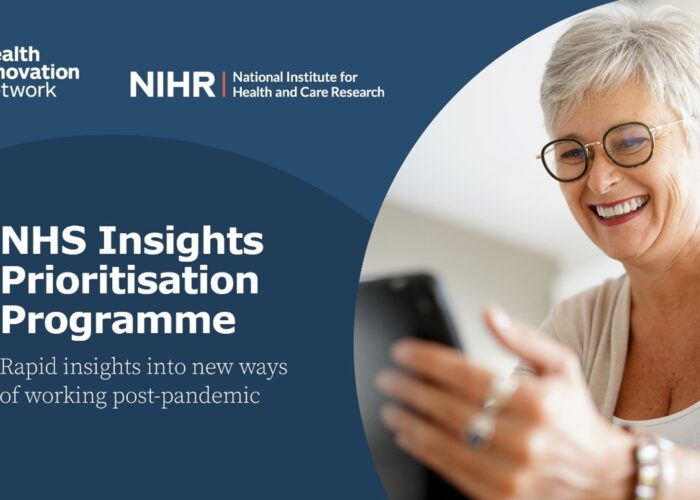The NHS has an unprecedented opportunity to make health care better and safer. We are close to missing that opportunity. It would be a major mistake to do so. At a time when the public and press are clamouring for safer care, some opinion leaders are objecting to one of the biggest opportunities to achieve it in a generation.
The opportunity is in the information that we can get by linking data from patients’ healthcare records across primary and secondary care. This will give new insights that will help detect and stop problems that may occur with new medications, plan services more accurately to meet patient expectations and needs, and develop new medicines and services at a faster rate.
The ‘care.data’ project aims to achieve these benefits. Unfortunately the messaging has been unclear, and concerns about patient confidentiality have not properly been addressed. The voices of those who are raising fears and concerns about the inappropriate use of data have dominated the discussion. The great advantages that this information will bring far outweigh the slight risks associated with it – and those risks can be made even smaller. This message has got lost in the noise.
The advantages are clear but have not been clearly explained or understood. The most obvious is the opportunity that linked data gives to detecting early problems from medication. An example would be the introduction of a new flu vaccine. Flu is a major killer. Because it evolves, new vaccines must be developed every year to match the threat. Mass vaccination does carry risks, but these outweigh the risks of mass infection. Linked data would allow the system to monitor (on an anonymised basis) people who were given the vaccine. Should there be an early pattern of increased attendance at A&E among this population, or of other healthcare events, an investigation could be done to detect and halt the problem before it became widespread. Other examples would include the ability to track people (again anonymously) after their discharge from hospital. High rates of healthcare events, including readmission, related to particular hospitals or treatments would give an early signal of something amiss that warranted further investigation.
New medicines are the cornerstone of improved medical treatment. It is increasingly understood that the results seen in clinical trials of medicines are not always reflected in normal care. Linked data would provide new ways in which medicines can be researched and tested beyond the early phases of their development. This would bring new treatments closer to many people suffering long term and potentially life threatening conditions. Side effects can be monitored. Benefits can be quantified. Not only would this be of benefit to patients with particular conditions, the fact that such research could be conducted across the NHS would make the UK the world’s leading country for the development of new medicines, capitalising on its great academic strengths, giving the UK early access to advanced care and bringing new prosperity.
In addition to this, a new phenomenon is the growing numbers of people who are taking four or more medications for different conditions or risk factors. Very little is known about how drugs work in such circumstances – how they interact and what side effects this polypharmacy might cause. It is impossible to assess this through the normal approach of controlled research trials. At present there is no systematic way of monitoring and assessing these questions. Linked data would enable a systematic review of cohorts of patients on different drug combinations and an assessment of the risks and problems caused by such combinations.
There is much talk of the huge challenges that the health system faces in terms of rising demand, ageing population, and limited resources. Patients demand ever better integration of care across organisational boundaries. Care will be provided in an ever greater range of settings as hospital consultants work more closely with other clinical professions and primary care in community settings. The system needs to track the outcomes of care and not simply focus on the processes of care. Understanding how patients use the health care system is critical to the accurate planning and development of new service configurations. Linking data across all health care systems will allow planners and commissioners to see patient flows, obstructions or bottle necks and areas of unmet need. It will allow them to track (and pay providers by) outcomes of care rather than simply by activity. As systems change (maternity units centralise or A&Es are downgraded for example) the consequences for local populations could be closely tracked and monitored with early alerts to problems for local communities, which could be rectified by suitable adjustments to plans.
Against these and many other benefits, there is an uproar of concern about confidentiality. What if individuals could be identified and the information used against them – especially, for example, by life insurance or other such companies? Can the government be trusted with such information? Stories have already emerged of previous release of collected data to actuarial organisations. It is surprising to see the number of organisations which have emerged, claiming to speak on behalf of patients in general but with little or no apparent mandate to do so.
The health system has been collecting and using linked data from hospitals for many years. Where releases have been made to actuarial organisations, this has been for the purpose of epidemiological assessment of patterns of morbidity or mortality, not for the purposes of singling out individuals to rate their insurance on a personal basis. Of course the controls that are in place must be reviewed and strengthened as the data available becomes more comprehensive and sensitive. But shouts of panic are inappropriate.
There are many explanations of the controls that are in place to protect the information. For the most part information is used only once it has been anonymised, and the code to identify individuals from that anonymised data closely guarded. The bodies which have access to the data are defined and limited.
There is a remote risk that diligent research could potentially identify individuals with a distinctive pattern of care. This would require access to all the linked information and either prior knowledge of characteristics of the individual concerned or access to the anonymisation codes. Such identification is protected by law.
The Government is adopting an approach under which it will be assumed that patients consent to contribute their information for the greater good of the population. This is in keeping with the traditions of common endeavour in the UK. Those who would persuade patients to do otherwise by scaremongering are doing a grave disservice. The onus is on the Government to explain more clearly the great benefits to be gained by the proper use of this information.
In the meantime, the EU is contemplating a directive on the use of information of this type which would require everyone actively to sign up to allow their information to be pooled for this general use. Such a directive would jeopardise all the potential for good of the proper use of aggregated data.
The public should be made more aware that the safety of their own care would be significantly enhanced by the collection and use of the data held in their health records. This message has got lost in the hullabaloo created by naysayers. The use of that data on an aggregated basis poses minimal risk to their individual confidentiality, a risk which is far outweighed by the greater good. The controls that are in place to keep that risk to a minimum should be continually reviewed, strengthened, and explained. The European intention to impose an ‘opt in’ system for the use of data in public systems should be strongly resisted.
Image source: http://omowizard.wordpress.com/



